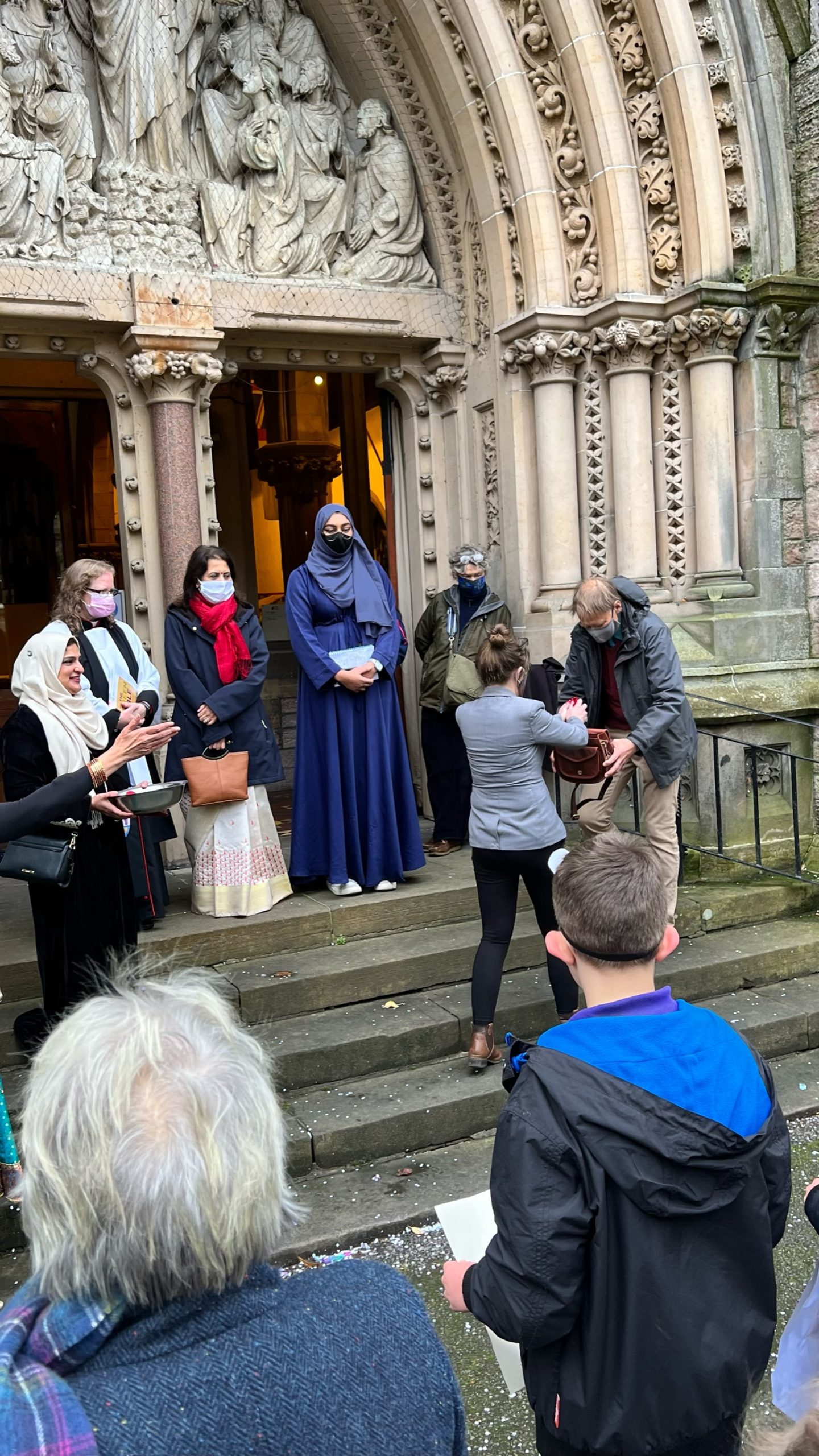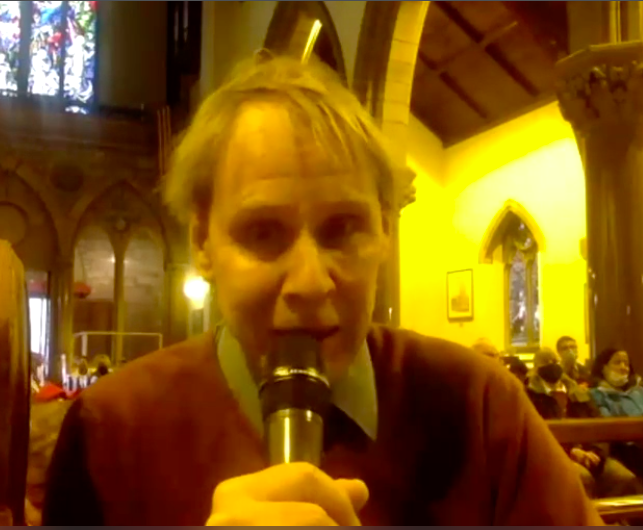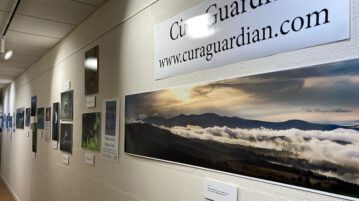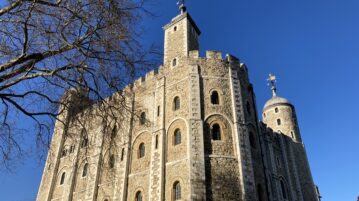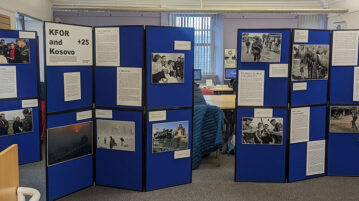
A Highland badger called Cùra is the centrepiece of a new environmental project which shines a new light on the natural world of the Highlands, latest scientific research connected with it, history and story connections. Launched from what turned out to be a captivating and inspirational event from Inverness Cathedral on November 1st to mark the start of the COP26 Climate Change Conference, Cùra is now growing rapidly into a new environmental concept which starts with spectacular images from the Highlands as the mechanism to make connections with cultures across the world.

The event involved almost 200 children from across the City, the Inverness Interfaith Group, the Eco-Congregation across the Highlands, representatives of NatureScot and VIP guests, including Highland Convenor, Cllr Bill Lobban and Cllr Trish Robertson, Chair of Highland Climate Change Working Group, to raise awareness of the natural environment, climate change and this globally significant conference.
Cùra has no specific religious connection but is becoming an initiative which encompasses all faiths, backgrounds, cultures, and, as with all Heartstone stories, exhibitions and events, it is a new route to get closer to and be inspired by the world which surrounds us all, to see what may be familiar with new eyes.
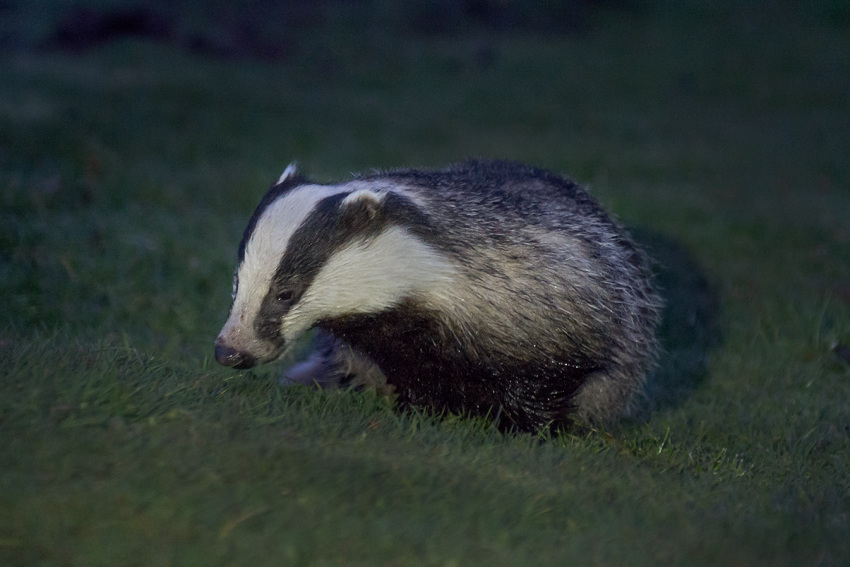
Cùra is a character from the book Heartstone was founded from, ‘The Heartstone Odyssey’. His name in Gaelic means ‘protector’ or ‘guardian’. In the story, his role is that of a protector of place and home, both social and the natural world, and he has a strong Highland historical connection, a story for children which is also capturing the hearts and minds of adults, which is why he was chosen as the centrepiece of this project. In the weeks before the event on November 1st, children read the book as part of their Story Circle activities, discussed the issues raised through it, including the need to challenge all forms of prejudice and intolerance, and then started preparing for the Cathedral event.
Photograph- badger: ©Nick Sidle

Children drawn from across the City, prepared beautiful artwork in the form of slogans, banners and badger masks for this colourful as well as meaningful event to represent Cùra.

The artwork represented the natural environment of the Highlands – its plants, animals and habitats.
The Procession
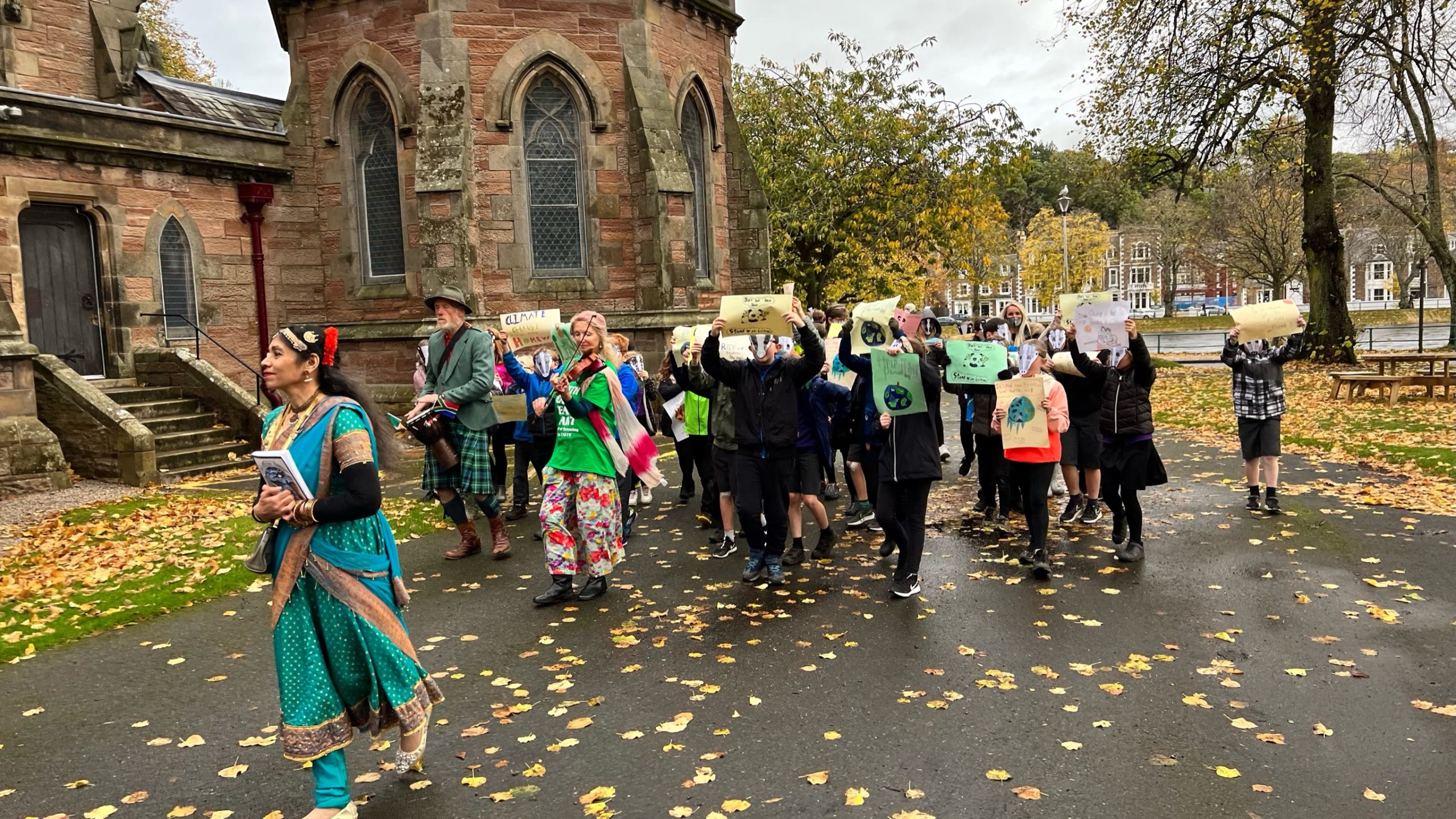
No-one had expected what turned out to be an inspirational procession around the Cathedral, with the River Ness flowing in the background, led by Sitakumari in her role as dancer/storyteller together with musicians, Alpha Munro of Kiltearn Fiddlers and Adrian Clark, drummer.
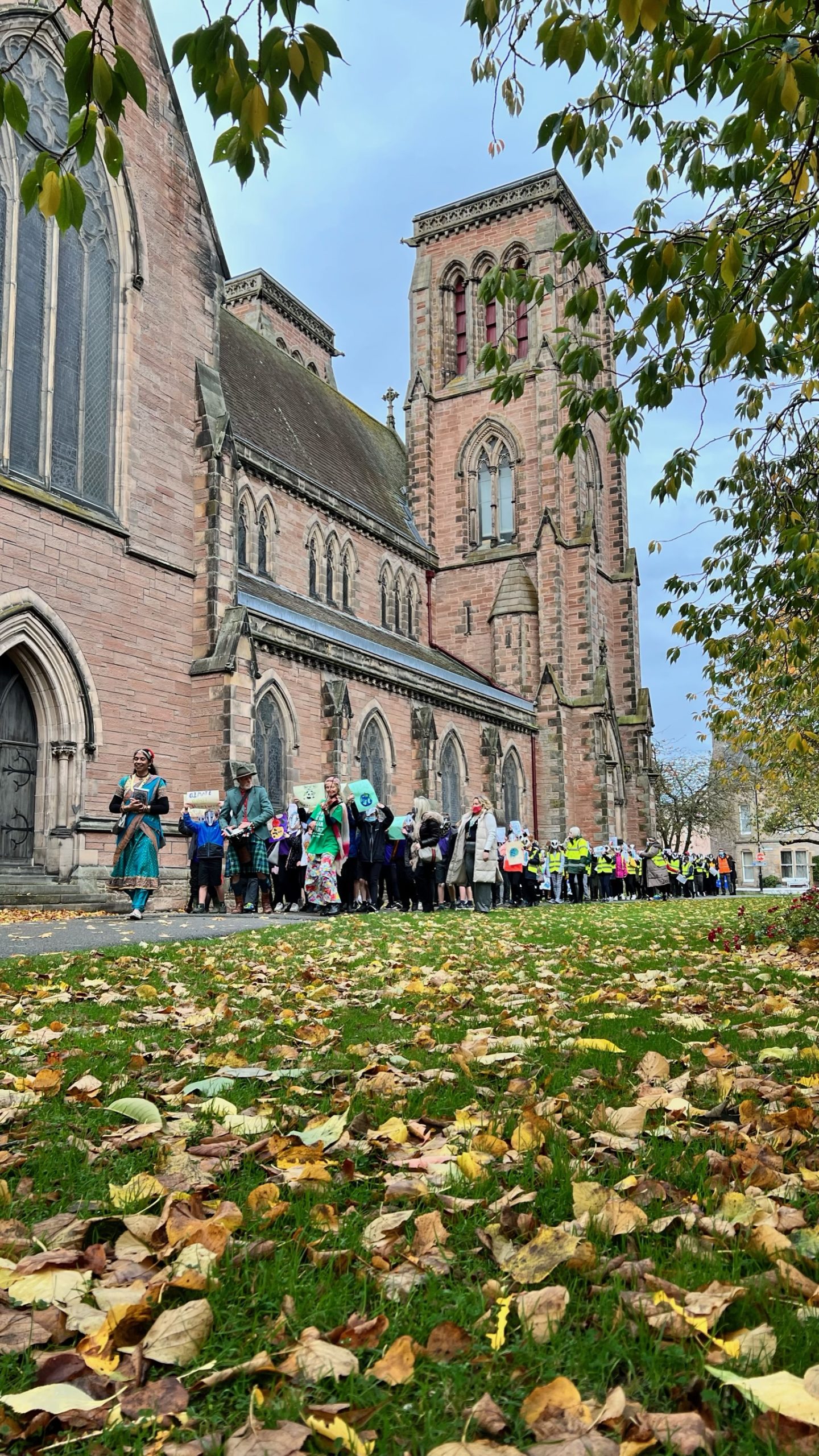
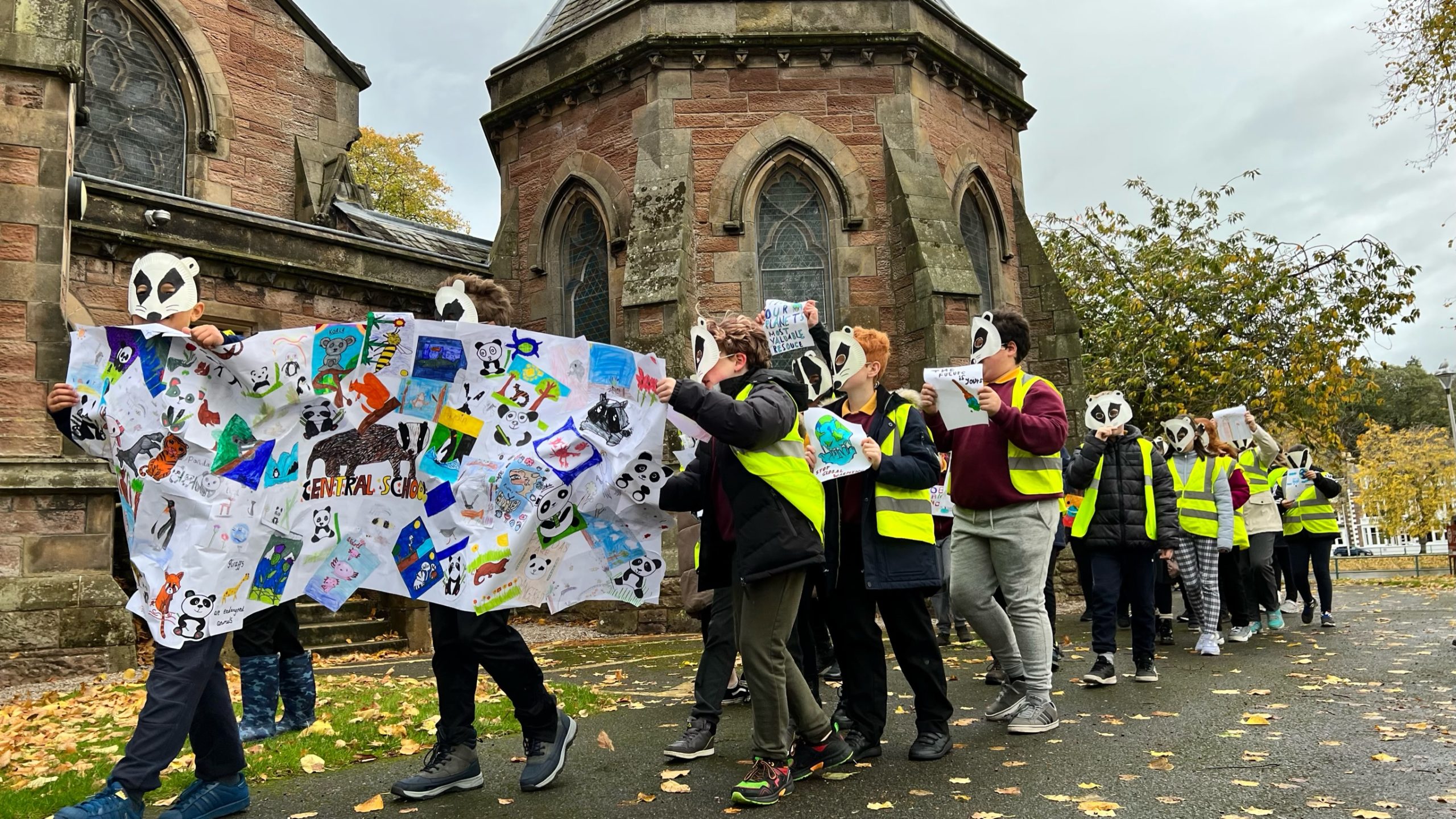
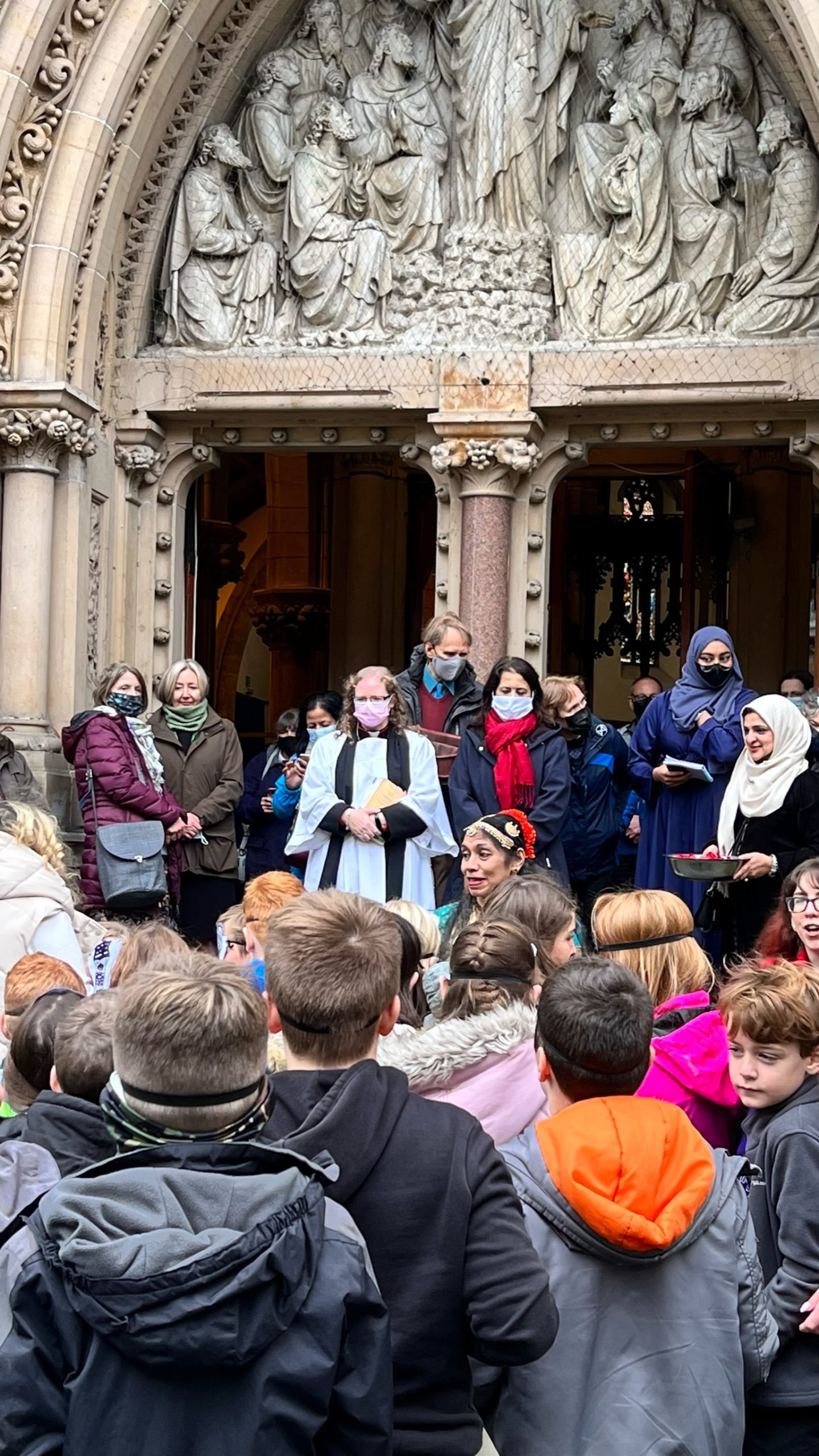
On the steps of the Cathedral, alongside Provost Sarah Murray for the Christian faith were representatives from Muslim, Bahai and Hindu faiths, the latter represented by Rena Amin, who had travelled from London to be at this event on behalf of the BAPS Shri Narayanaswamy Temple, the largest Hindu temple outside India. This was the first interfaith event staged by Inverness Cathedral.
Children and special guests then took part in a special ceremony on the Cathedral steps, led by Provost Sarah, replicating an Indian ceremony in which flower petals are offered to the rivers and seas as a mark of respect.
Rose petals were placed in a special pouch in preparation for scattering in the River Ness after the event. The pouch was filled by those present, covering several faiths, backgrounds, cultures, creating a powerful atmosphere of unity and respect for the natural world that surrounds us and marking the need for everyone to put aside differences and work together if we are to successfully tackle climate change and bring hope to future generations.
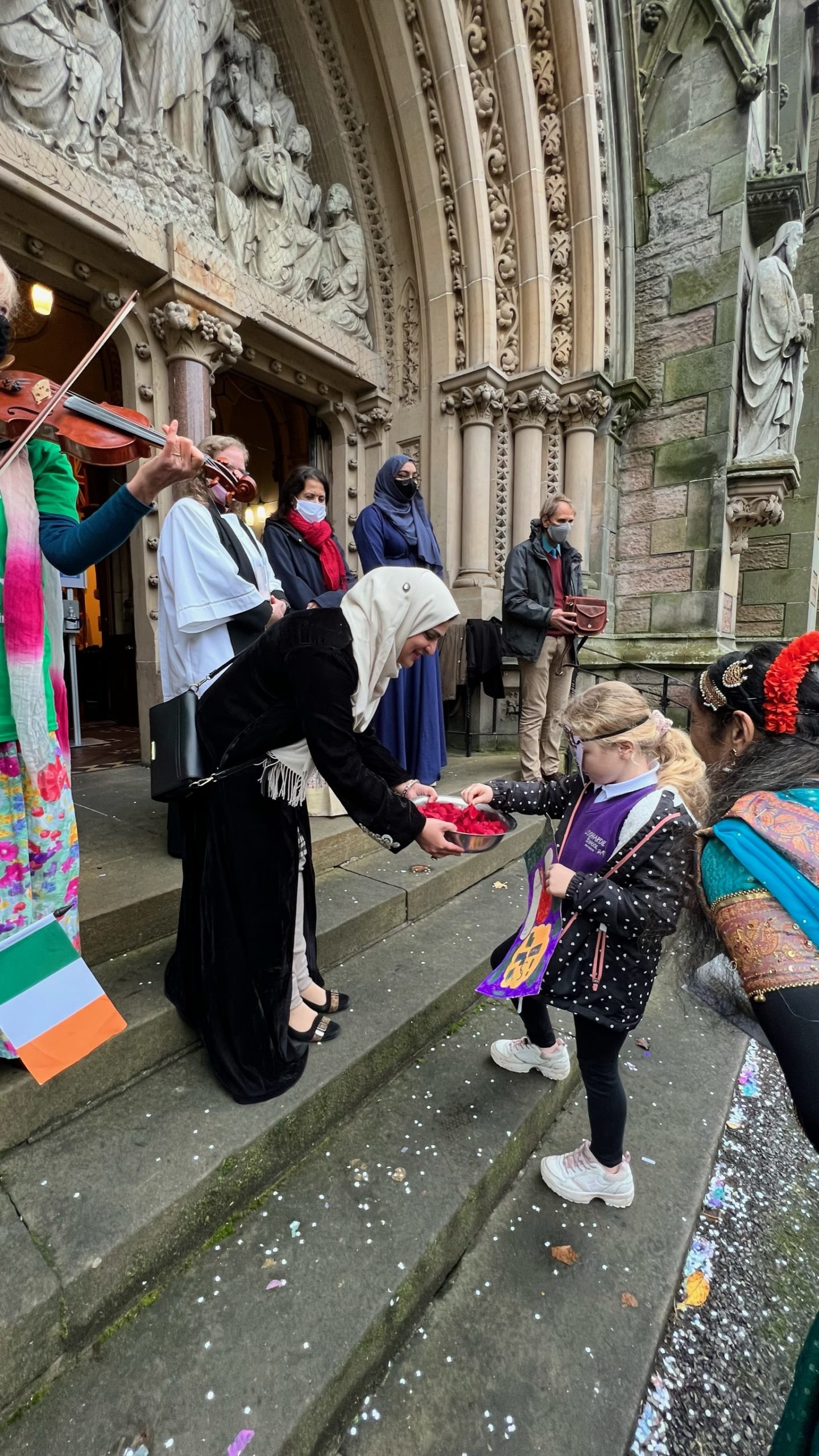
Unveiling Cùra, the Joint Artwork
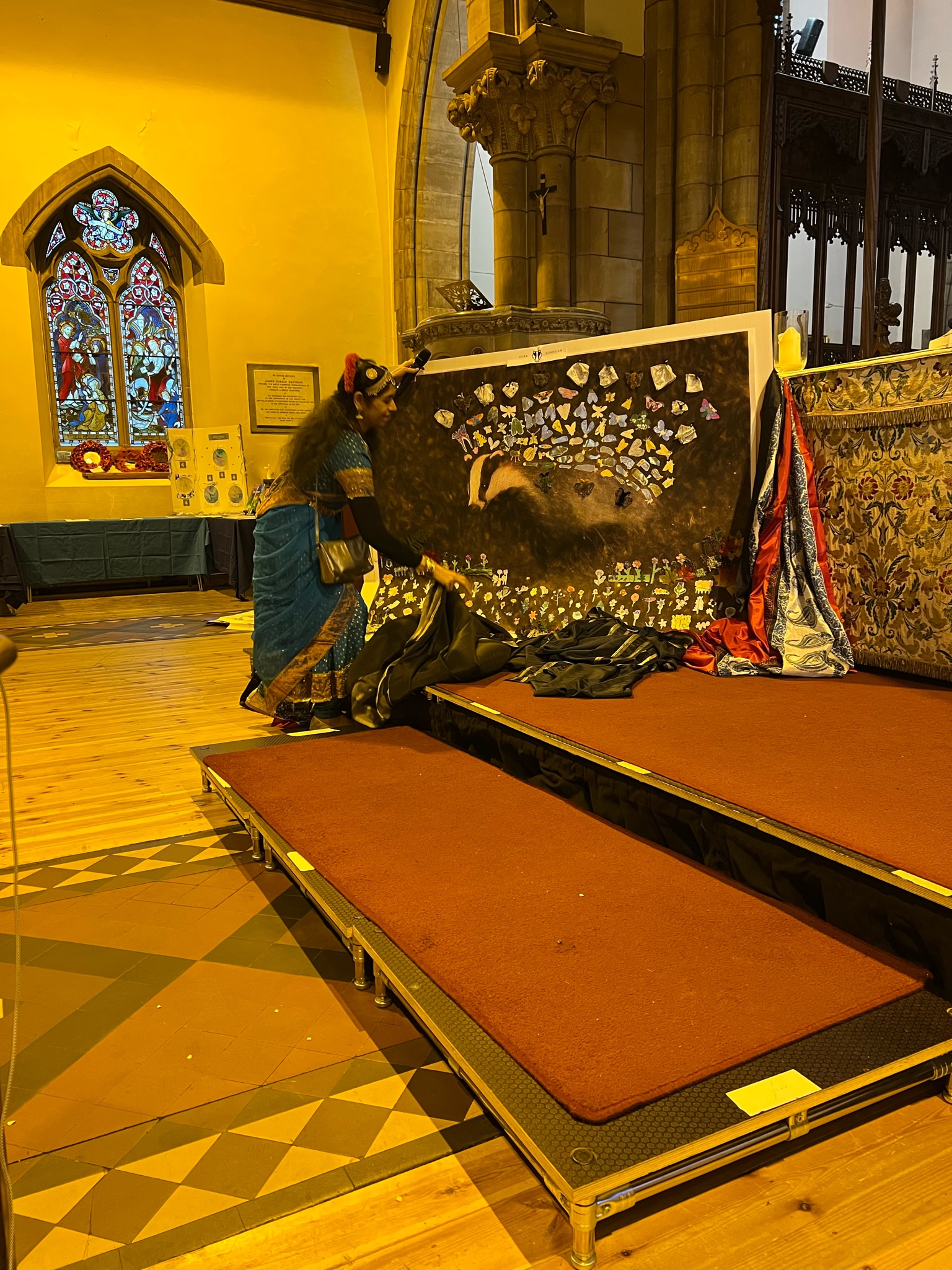
The ceremony continued inside the Cathedral with the unveiling of a stunning single joint artwork created by the children in the weeks before the 1st to represent the world of Cùra and the Highland natural world where he lives, marking the need to care for, protect and preserve the environment.
Below: Sitakumari (left) and Provost Sarah Murray (right)
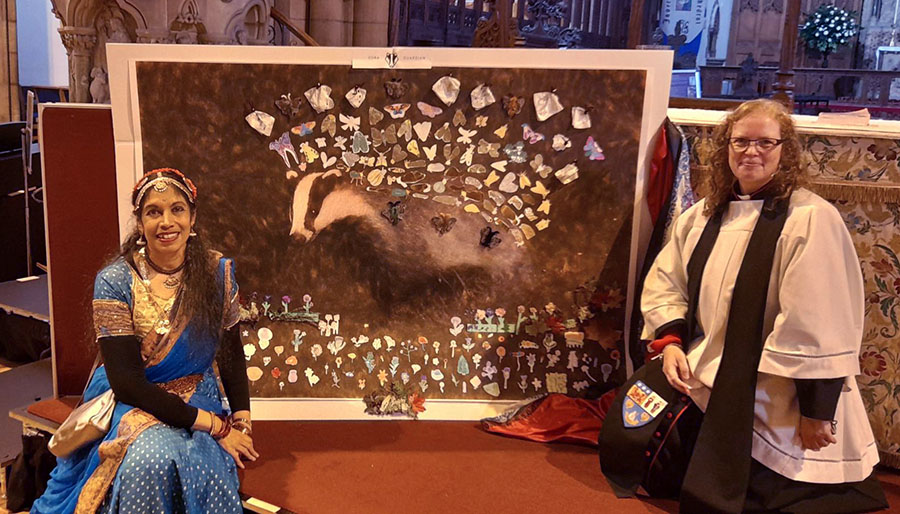
Cùra – Connecting Faiths, Cultures, Backgrounds
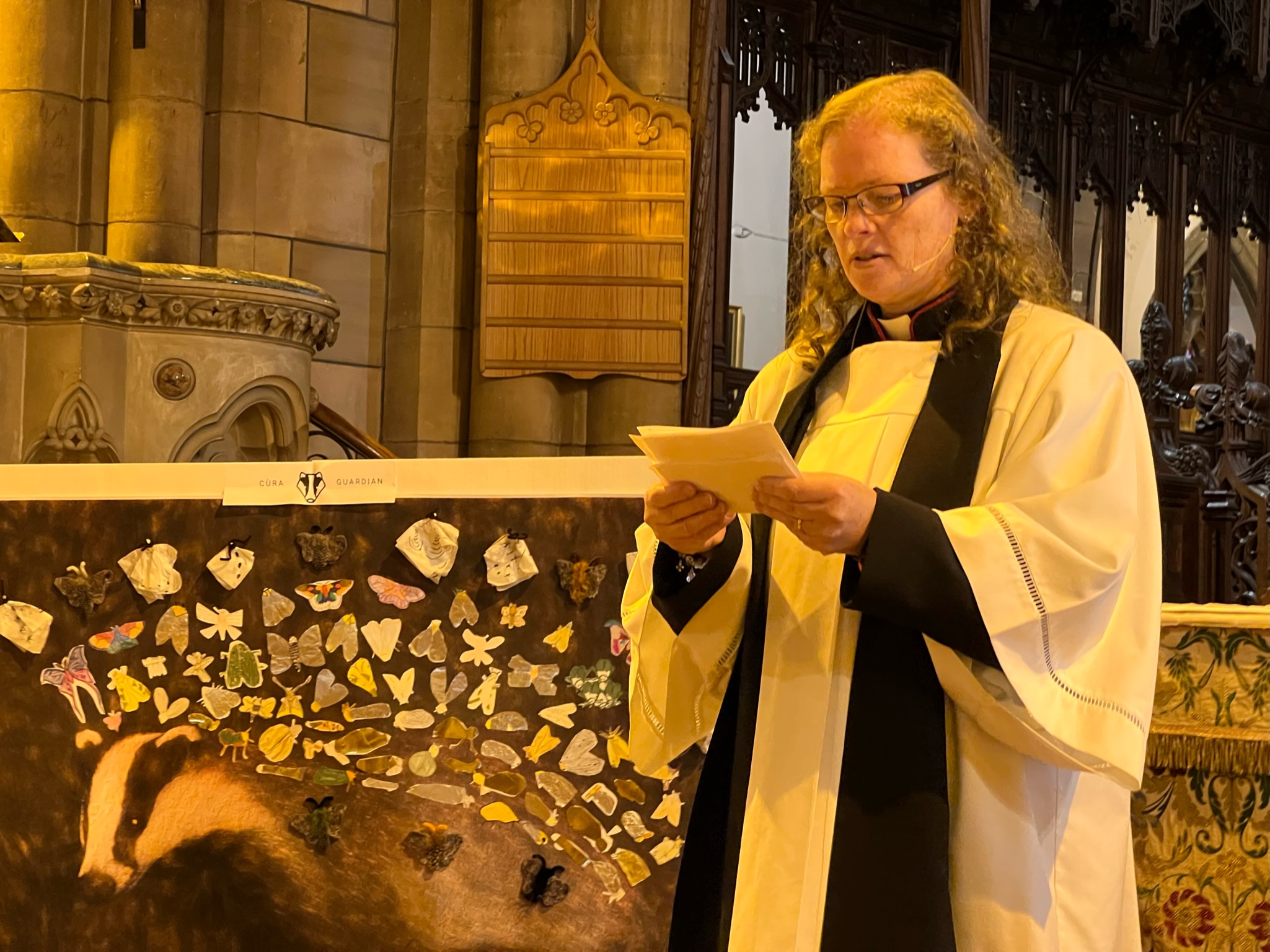
The ceremony inside the Cathedral opened with an address from Provost Sarah Murray and then moved to statements from Muslim, Hindu and Bahai faiths.
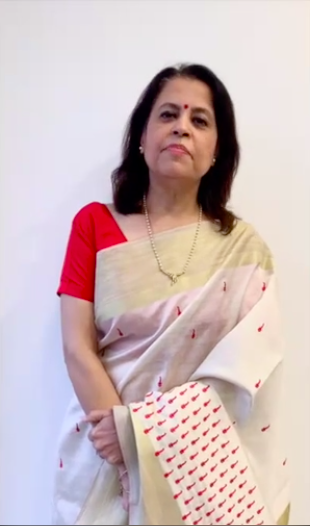
The Head Priest from the London BAPS Shri Narayanaswamy Temple, below, had prepared a recording for the event and was introduced by Rena Amin, left.
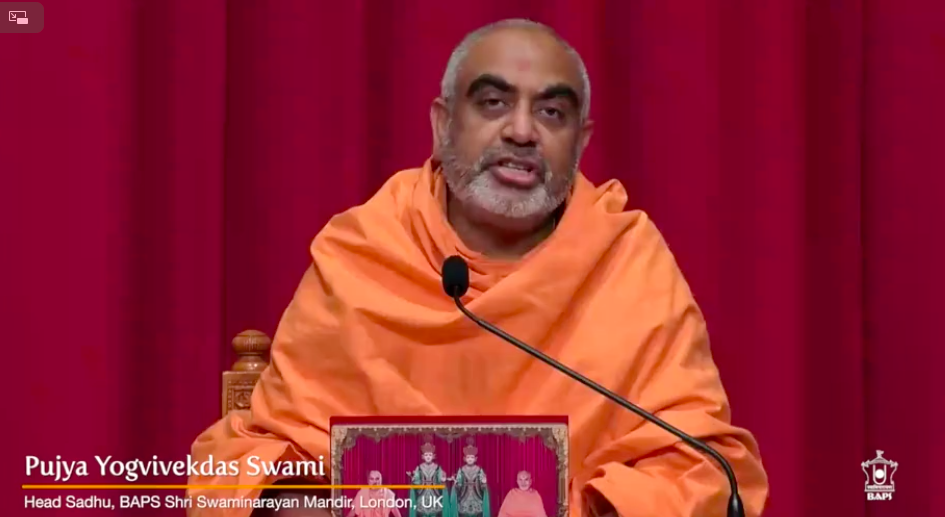
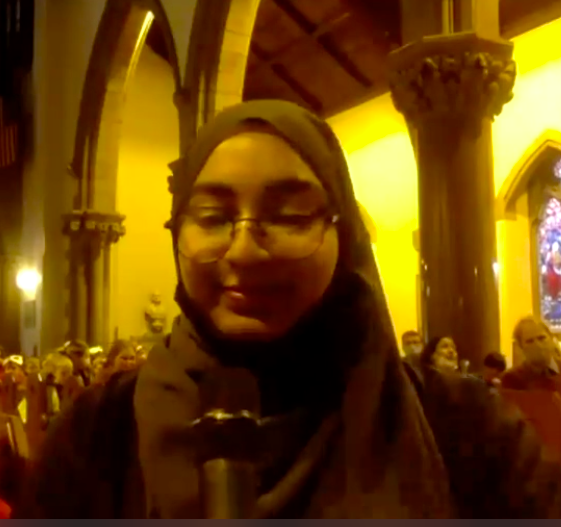
Ruhi Mahoomadally (left), representing Inverness Mosque, and Rolf Schmidt (below) of Inverness Interfaith Group both spoke from a personal as well as faith perspective of the need for all faiths to work together on climate change.
Cùra’s World – Connecting the Continents
One of the aspects of the Cùra project though, which also makes it stand out as a unique concept, is the connection which is being made through it with indigenous communities across the world. The partners currently include Canada, USA, Colombia, Peru, Kenya, India and the Pacific Islands and more are being added week by week. Since November 1st, these communities have recorded interviews with Heartstone for incorporation on the new Cùra website which is taking shape as part of this project, sharing their own cultural stories which demonstrate the connection they have had with the environment which surrounds them over millennia and which has shaped their worlds.
These connections have been made possible through a photolibrary of over 2m images which, alongside the Cùra story, provides the starting point for the entire project. Built over a period of 30 years, this is the work of Nick Sidle, Heartstone’s photographer and writer. Many of the images have been gathered with special access from global partners and the library is still growing. The environmental part of Nick’s photolibrary includes plants, animals and habitats which bring Cùra’s world in the Highlands to life. In this project, it has a further role – it provides the mechanism through which the global connections are being made. All the environmental images below are drawn from Nick’s photolibrary and provided the link with our overseas contributors.
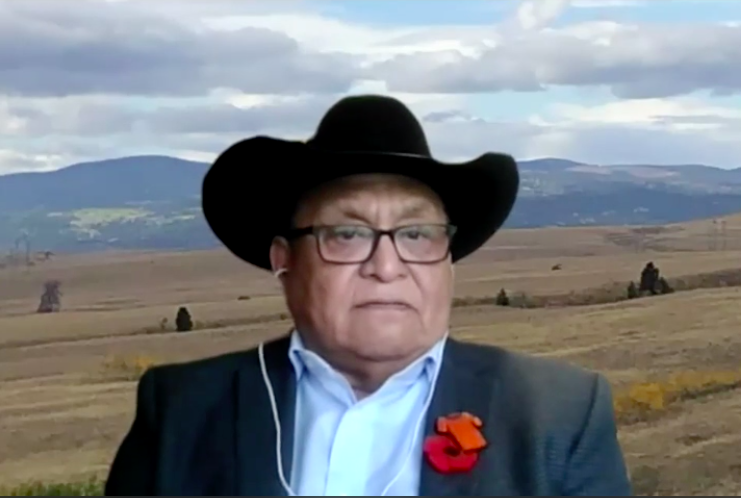
Taking part on November 1st were representatives from four other continents. The ‘four chiefs’ of the creation stories of the Upper Nicola Band, one of the First Nations in British Columbia, are environmental and include the Saskatoon berry, Bitterroot, salmon and the brown bear. The story interview with Chief Harvey MacLeod therefore started with Scottish images of related species, the elder berry, salmon and the bone caves in Sutherland where bones of bears from prehistoric times have been found.
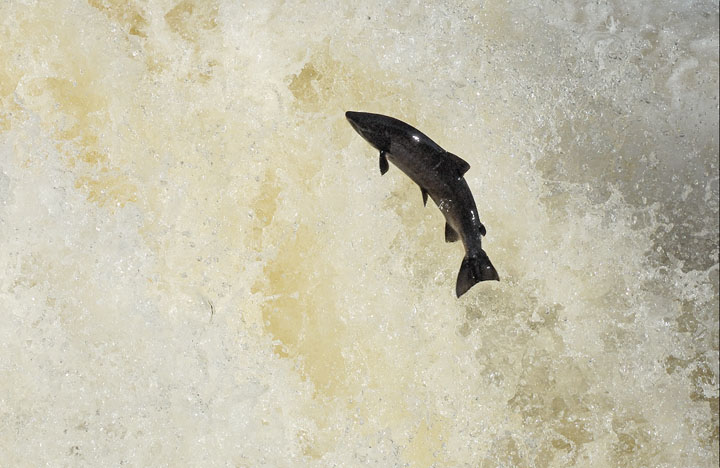
The image on the right is of a leaping salmon in the Scottish Highlands.
To access the Story Interview, copy and paste the link below and select the Chief Harvey MacLeod Interview:
https://img.gg/q1PR9CZ
Photograph – leaping salmon: ©Nick Sidle

Spectacular Amazon rainforest butterflies provided the connecting link to South America, alongside equally stunning images of those in Highland. Stories connected with both were told by Sitakumari, Director and principal dancer/storyteller for Heartstone, an artist from one of the Amazonian rainforest tribes, now forcibly relocated to urban areas of Peru through deforestation and climate change impact and Yolima, pictured here (right), from Colombia.

Yolima (above), introduced by Nuala Riddell-Morales, Director of Carnaval del Pueblo (right) who work with 19 South American countries, called in from Colombia and described her early experiences of walking for miles just to get to a secondary school, something not possible in her own village.
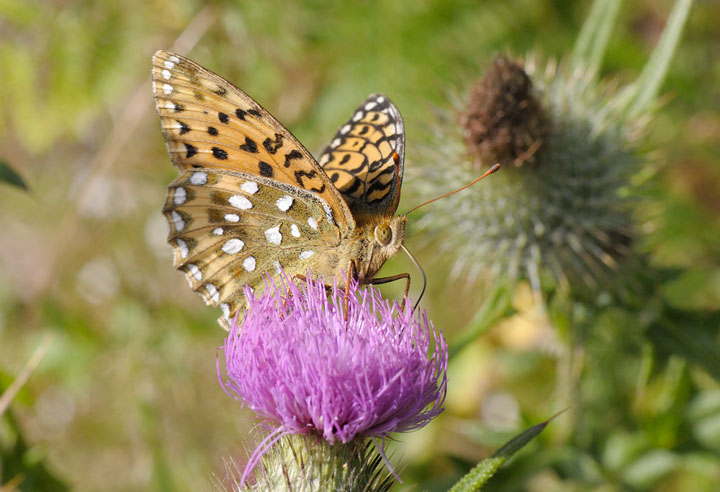
The images provide a vehicle for deeply personal stories, as well as cultural stories to come to light which have never been heard, a powerful demonstration of the resilience of the human spirit and why art, storytelling and the natural world are so important, helping to keep a culture alive despite racism, intolerance and other challenges thrown in their way including, as in the Peruvian example, having had to move from their original homes.
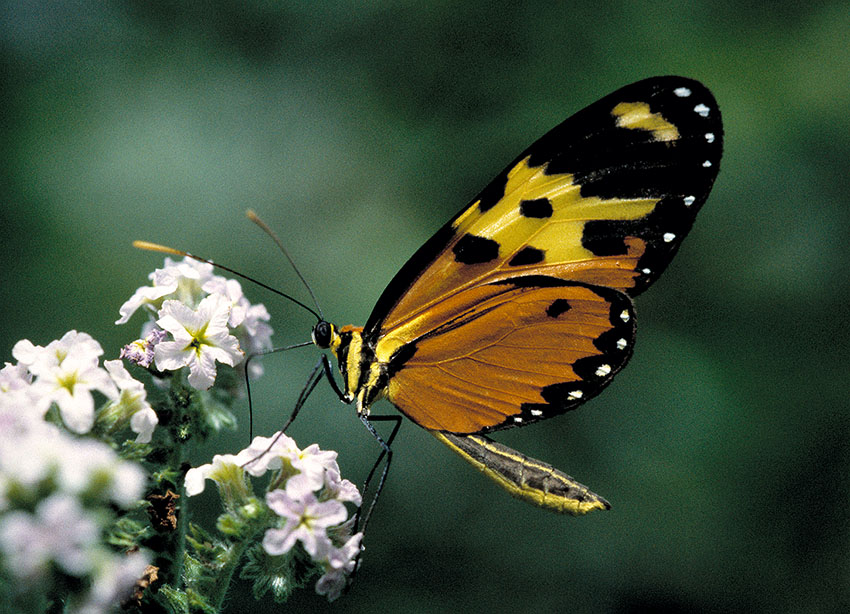
The Scottish Dark Green Fritillary (above) was an ideal complement to the paintings of Amazon butterflies (left) presented by our Peruvian presenter.
Photographs above and left: ©Nick Sidle

From Mumbai, India, Vasant Nath, screenwriter, presented the story of Indra’s Net, a story from Hindu mythology featuring many creatures including swans. Its message was of the interconnectedness of life in all its facets.
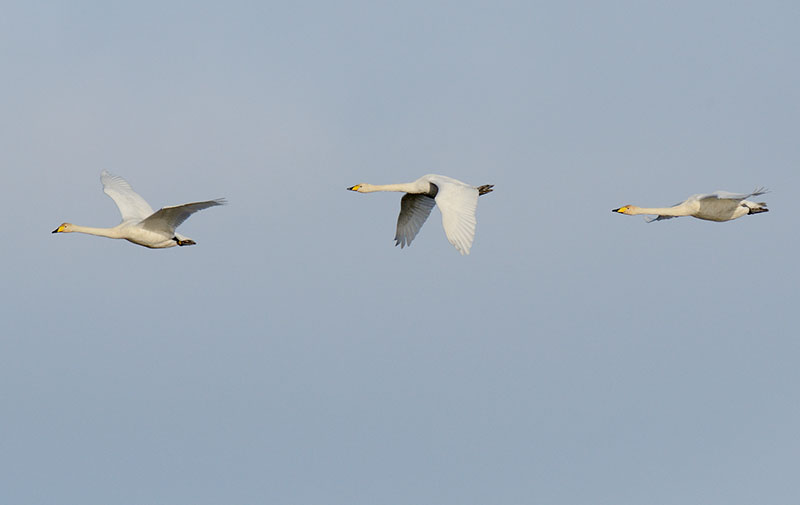
To access the Story Interview, copy and paste the link below and select ‘Indra’s Net, A Story from India’:
https://img.gg/q1PR9CZ
Photograph – swans in flight: ©Nick Sidle

Oceania represents a vast area, islands and communities across the Pacific many of which are being directly impacted by climate change. Rise in sea levels is seeing many having to move from coastal homes to locations further inland. From Fiji and the Solomon Islands, artist and storyteller Frances Vaka’uta and her friends spoke of the Golden Plover and connection with their creation stories. The Golden Plover photographed here in Highland is a close relative.
Photograph – golden plover: ©Nick Sidle

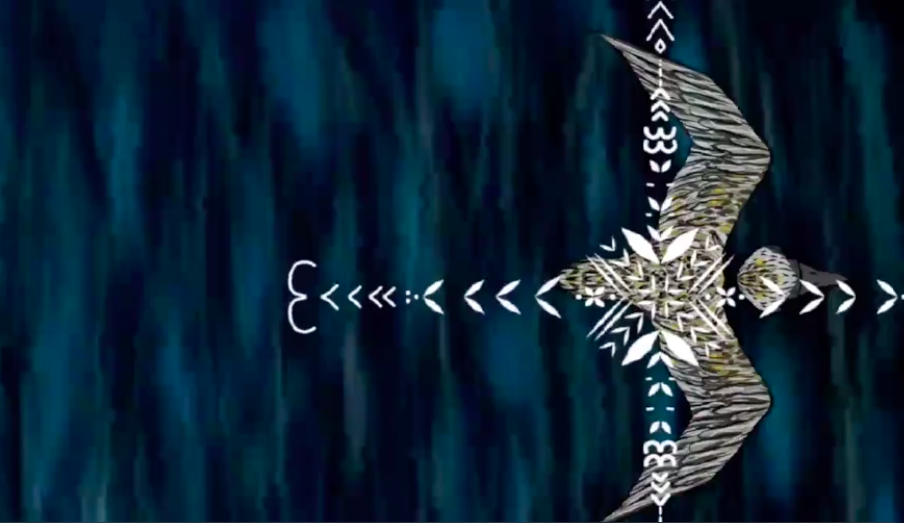
The artwork (left) is taken from the animation created by Frances and her colleagues in Fiji as their contribution for this event. It was a powerful presentation of their creation story and the role of the Golden Plover.
To access the Story Interview, copy and paste the link below and select ‘A Story from Oceania’:
https://img.gg/q1PR9CZ
Rose Petals at the River Ness

Perhaps the most moving part of the day however, was the climax at the River Ness. The rose petals, which had been placed carefully in the pouch on the Cathedral steps with thoughts, prayers, blessings were scattered in the river, as in the Indian ceremony, reminding everyone of the connection we all have with the rivers and seas and the role they have to play in climate change.
Rena Amin (left) takes a handful of petals from the pouch before scattering in the river.


Uma Reddy (above) and Hector Munro (right) scatter petals followed by many more special guests who followed. Symbolising the connection between people, the rivers and the seas they flow into, it was a fitting end to a unique day.

The event was covered on the front page of the local papers to the delight of everyone who had participated, making this a wonderful opening for COP26 from Highland.
This event and perhaps most importantly, Cùra, the badger and his extraordinary, often ghostly, adventures, has sparked the imaginations of everyone who was there and beyond and has led to the invitation to stage a bigger and more developed event at the Inverness Botanic Gardens in the summer of 2022 with more of the Cùra stories, the involvement of the Highland Archive Centre, to connect with Cùra and the Highland Land Clearances, and an exhibition of the natural environment of the Highlands which provided the starting point for the development and staging of this event. The exhibition will use the images taken by Heartstone photographer, Nick Sidle, which have provided the connection with the global indigenous communities who are all now part of the Cùra initiative and who will all be taking part in the summer event.
Heartstone would like to thank NatureScot, Inverness Cathedral and Eco-Highland 2021, Eco-Congregation Scotland, Inverness Interfaith Group, Inverness Mosque, Awards for All, Highland Education, all the Inverness schools who participated, Alpha Munro and Adrian Clark – the musicians, and particularly Kerry Kendell and Kristy Strange for their tremendous effort in ensuring this first Cùra event has been such a grand success. We would also like to thank Paul Hamlyn Foundation for their funding towards the online events staged from the Cathedral.


